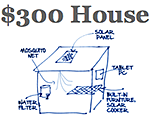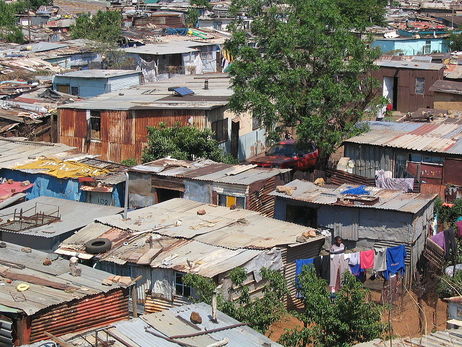Can $300 Change the World?
Published May-28-12Breakthrough:
Applying smart brains to tackling housing problems for the poorest of the poor.
Company:
Vijay Govindarajan and Christian Sarkar, United States
The Story:
 It began as a challenge on a blog post on the ‘Harvard Business Review’ and thanks to a huge response from the public grew into a collection of 300 design submissions from all over the planet.
It began as a challenge on a blog post on the ‘Harvard Business Review’ and thanks to a huge response from the public grew into a collection of 300 design submissions from all over the planet. $300 House Challenge
The mission of this open innovation initiative was simple: to design an affordable, safe and comfortable home that could be constructed for under $300, for some of the world’s poorest people - a home that would replace squalid shanty dwellings that can easily collapse and/or catch fire.
In their August 2010 HBR blog post Vijay Govindarajan from Dartmouth College’s Tuck School of Business and Christian Sarkar, a marketing expert provided a sketch of their solution and wondered if a mass produced version of it could be created.
They wanted to apply some of the best business thinking in the world to come up with more durable structures that would make life easier for those in dire need. The challenge sparked the imagination of many readers which kick-started the contest and has now turned into a movement.
Challenge Criteria
In addition to keeping the cost under the $300 dollar mark there were a few others conditions; the homes had to be made from mass-produced materials that are robust enough to protect inhabitants from the elements, and they should be equipped with all the basic essentials for comfortable living and include water filters and solar panels.
Poverty Alleviation
A good, solid and affordable home can alleviate so many of the problems that blight the lives of the poor, because it's poor housing that contributes to some of them - they encourage the spread of diseases, make the occupants feel insecure and do nothing to alleviate poverty as children have no lights to study.
Why $300?
There were a number of reasons why and how the organizers arrived at the $300 dollar figure:
1) To encourage a lean design.
2) Based on a rule of thumb that if it costs $3000 in the US, it should be possible to have it built in India for $300.
3) From looking at Grameen's poverty metrics in Muhammad Yunus' book 'Creating a World Without Poverty: Social Business and the Future of Capitalism'. It mentioned that the average house value of a Grameen member who had escaped poverty was $370. So the figure was rounded down for those still living in poverty.
Tough Challenge
Creating such a dwelling is indeed a tough challenge but one of the most exciting things about the open innovation concept is the belief that even the most intractable of problems can be solved when brilliant and creative minds are spurred into action. And that is indeed what happened here.
There were a number of contest winners and they were selected by a panel of judges in combination with community votes.
Numerous Winners
The top 16 placements as voted by the community shared $10,000 worth of prize money and $15,000 in scholarships was made available for six participants to attend a prototyping workshop.
"We're delighted by the depth and breadth of the submissions we received," said Vijay Govindarajan, Professor of International Business and the Founding Director of Tuck's Center for Global Leadership. "Hosting this contest on Jovoto's open, co-creation platform gave us a wealth of ideas and identified the people who we believe have the passion, skill, and commitment, to take the project to the next level, prototyping and actually building a $300 house for the poor.”
As of the middle of 2012 prototyping is still underway and the project is looking at three countries with participating organizations: Ethiopia, India and Haiti.
Reverse Innovation
Although the principle aim of this contest is to help the world’s poor there is also another fascinating aspect, and that is reverse innovation - the prospect that lessons could be learned from building a $300 house to construct a $3,000 or even a $30,000 in developed countries.
[THE $300 HOUSE]
Next Story »

